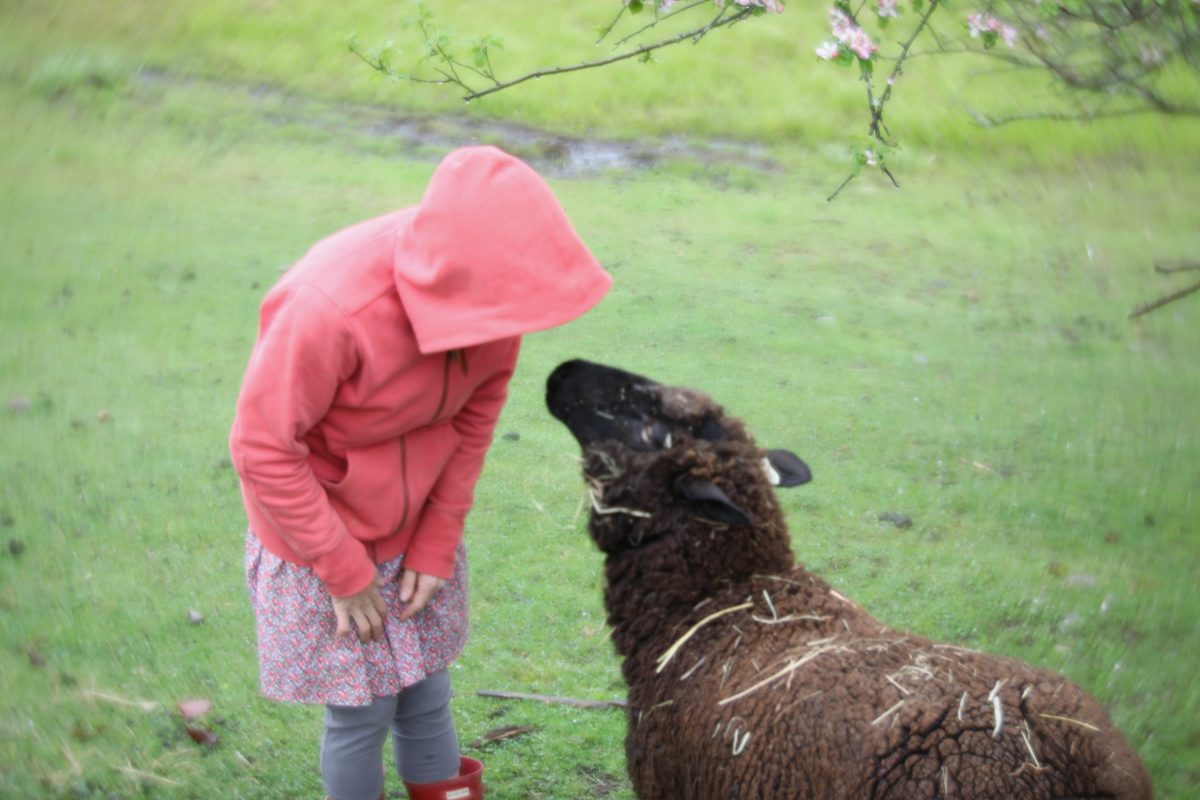I am fascinated by the different ways in which people talk to animals. I grew up in a conservative and phobically reserved Catholic city called Providence, R.I.
People didn’t go around talking to animals there, and I was always embarrassed whenever I tried to do it. My family thought the idea ridiculous.
My relationships with dogs have almost always been marked by silence and propinquity.
My dogs and I show our love mostly by being together, walking together, riding together, even sleeping near one another. Dogs are always talking to us, and the more we are open to it, the richer the conversation.
I am a strong believer in visualization – talking to dogs without words.
I rarely spoke to Red, although I have been singing to Zinnia at times – she seems to love it – to the amusement of my wife. When I sing songs to Zinnia, she comes close and licks me on the nose.
Maria says I am in love with her.
Maria has taught me a log about talking to animals, she does it all the time.
This morning, she had a chat with Asher, one of the sheep. She loves to talk to the donkeys, and they love to talk with her.
Maria talks to plants, snails, butterflies, trees (not an animal, I know), flowers, spiders, sheep, donkeys, and of course dogs. She has a higher voice, which animals love, and she approaches them with the focus and warmth of a great teacher.
Yesterday, out in the woods, she had a long talk with some wildflowers and the bark of a tree.
Animals are wonderful readers of the moods of humans – their lives often depend on it – Maria’s enthusiasm and trust appeal to them in many different ways.
She loves just about anything that is alive, and I think plants and flowers sense that. Biologists believe they respond to human attention and words.
When I am conveying a message to an animal, I clear my head of anger or tension. I raise my voice a bit and look them in the eye. I muster as much enthusiasm as I am capable of, although I’ve never been great at that high voice people use.
Mostly, my in-depth conversations with animals revolve around dogs and donkeys. I believe I communicate with them as trainers do, with my body language, my emotions, my imagination.
They know what I am thinking, and most of the time, I feel I know what they are thinking.
Note: Two people messaged me this morning asking that I stop using my Lomography art lens because they have cataracts. I said (nicely) that I can’t structure my photography around the eyesight of each of my readers. I’m sorry some people are having trouble liking some of my photos, but I can’t imagine asking any photographer to do that.
And I sure won’t stop taking those photos. I’m not throwing that Russian glass away.


Oh, yes! I talk to my cats all the time. And how can I not love a blogger who uses the word “propinquity”.
ummm. I would like to offer the advice of-don’t change your voice or thought process before trying to be verbal with animals. I believe that animals already know your emotional state-emptying your mind of anger and negativity just sends mixed messages. Speak normally-they don’t care what you sound like, as long as you try to communicate with them. I strongly believe, based on over 60 years of communicating with animals, that they don’t need the verbalization, but the fact that you are using the human way to try to communicate means a lot. To them it means you are trying to connect with them.
All they need to know, when you are angry or upset, is that the anger is not directed at them. They figure that out quickly by your body language, and so can become great listeners. I know you’re not used to talking with children, either, so talking with animals would give you practice. Talk WITH them, just like you would do with Maria. A conversation.
And yes, you know animals love music. Why is Zinnia the only one you share music with?